
The Marly Palace is one of the pavilions, the so-called small palaces, located in the Lower Park of the Peterhof Palace and Park Ensemble in Peterhof (St. Petersburg).
The palace is one of the main attractions of the western part of the Lower Park.
The Marley Palace gave the name to the entire northwestern part of the park-the so - called Marley Palace ensemble, which, in addition to the palace itself, also includes nearby ponds, gardens and fountains.
The Marly Palace was built by order of Peter the Great in 1720-1723 by the German architect-decorator Johann Friedrich Braunstein.
Initially, it was assumed that the palace would be one-story, but when the building was almost finished (brought under the roof), Peter I ordered to build another one-the second floor. This decision of Peter the Great was due to the fact that the one-story palace did not correspond to the size of the Large Pond located next to it and looked small against the background of the latter.
The name" Marly "was given to the small palace by analogy with the residence of the French King Louis XIV" Marly-le-Roi " (Marly Royal), which Peter I visited in 1717.
Since its construction, the Marli Palace has been used as a guest house for the residence of nobles and members of the imperial family. During the history of the palace, Catherine I visited the walls of this palace; her eldest daughter Anna Petrovna lived here for some time with her husband, the Duke of Holstein; the French Ambassador Zh. Nicholas I and Alexandra Feodorovna and other representatives of the Romanov family, as well as their high-ranking guests, rested and drank tea.
During the reign of the daughter of Peter I-Elizabeth Petrovna, the Marley Palace practically turned into a memorial museum of Peter the Great.
In 1918, the palace became a historical and domestic museum, open to all working people. The palace housed the tsar's personal belongings: clothing, items associated with his name, dishes, diplomatic gifts, and paintings from his collection.
During the Great Patriotic War, the palace was destroyed. Its restoration lasted 30 years by architects E. V. Kazanskaya and A. E. Gessen based on archival materials and pre-war photographs.
In 1982, the palace re-opened its doors as a museum, which is still today.
The Marley Palace looks elegant. But its main feature is not in the richness and splendor of the exterior design, but in the successful architectural proportions and simple, but refined decoration.

The interior of the palace is relatively modest - the palace does not have a traditional ceremonial hall.
During the construction of "Marli", a new method of planning was used - for the first time, a corridor system appeared, where various rooms and rooms were adjacent to the central axis of the corridor.
The first floor was occupied by a kitchen, a pantry, a large Front hall, a duty room, a bedroom and a small Plane room, which is distinguished by a special beauty of decoration - its walls are lined with plane wood, and three portraits of the children of Peter I are used as picturesque inserts: a pair of Elizabeth and Anna and portraits of Peter and Alexei. A staircase with an openwork railing leads to the second floor, where there was a dressing room, a dressing room, a living room with a small corner room, a dining room, an oak study and a library that stored books on mathematics, park construction, fortification, maritime affairs, etc. Today, the Marlin Library has 69 books on display.
Now the museum in the palace walls presents a collection that tells about the time of Peter the Great and contains memorial items related to the personality of the first Russian emperor: a cloth cloak-epancha, two flasks of brown glass brought by Peter from the city of Spa, damasks of colored glass with the seals "Danzig" and "London".
The basis of the museum's painting collection is made up of paintings that are mentioned in the inventories of the 18th century, including works by Adam Silo, Abraham Stork, Pietro Belotti and other artists.
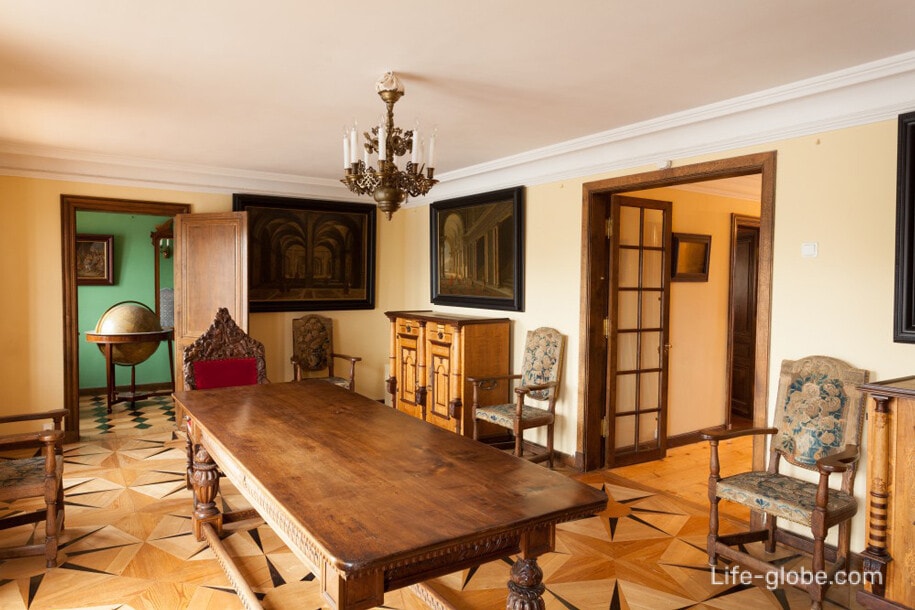
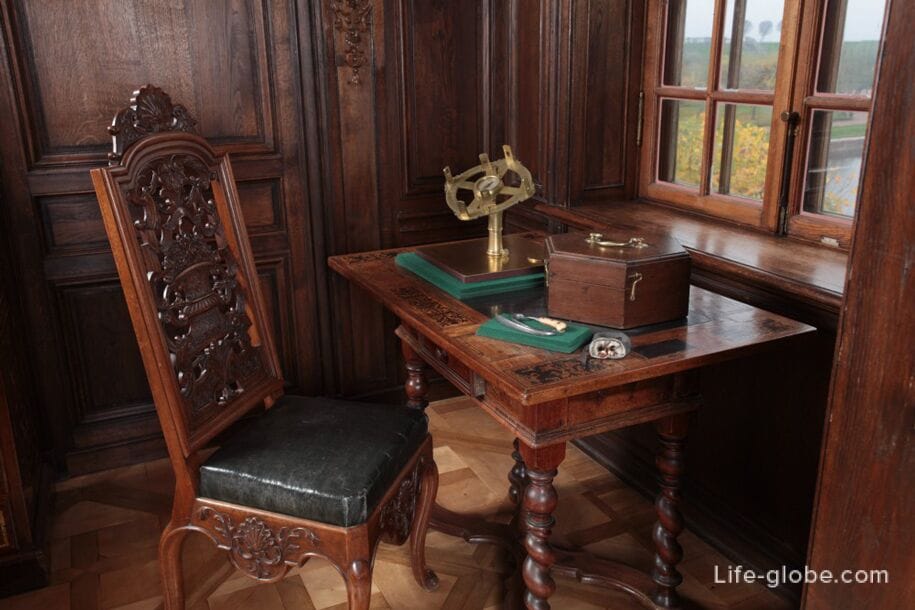
The Marli Palace stands on an artificial bridge between the Sectorial and Large Marlin Ponds, which were created at the same time as the palace and in which fish were bred for the royal table. This tradition is still alive today - fish still live in the ponds and at certain hours the fish is fed, calling it by ringing a bell.
Against the background of the ponds, the silhouette of the Marley Palace itself seems to float in the air.
The most impressive isThe large Marlin Pond, located in front of the palace (on its eastern side).
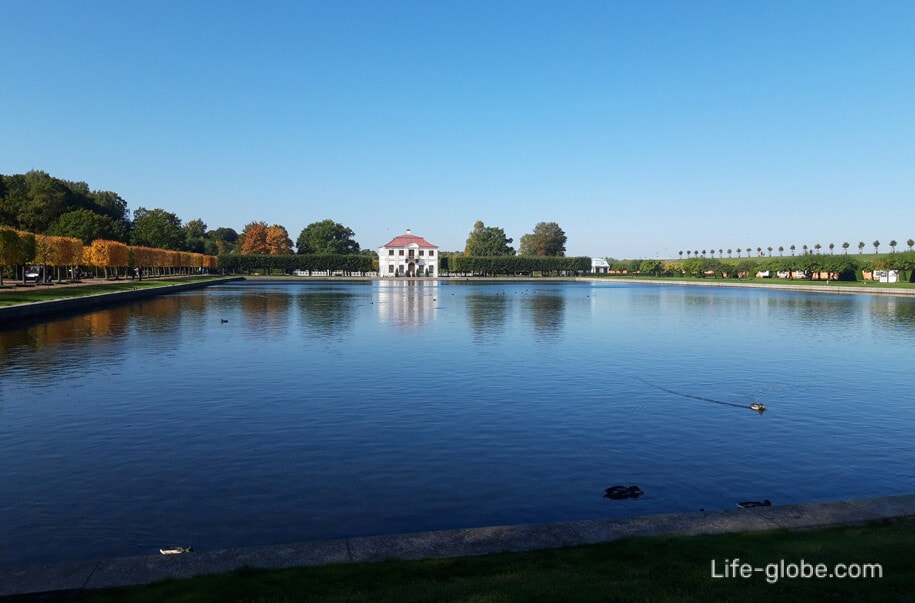
On both sides of the Large Pond are alleys leading to the Marly Palace.
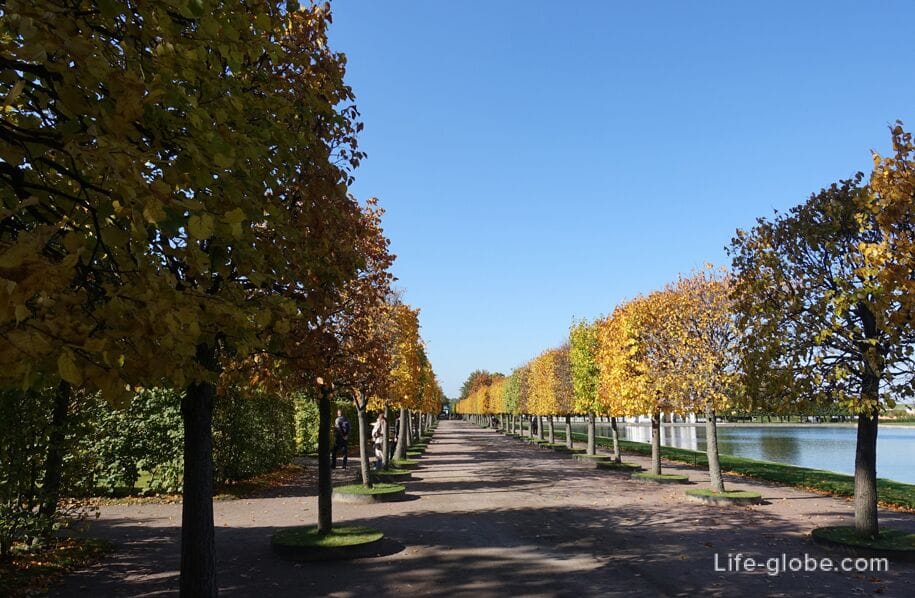
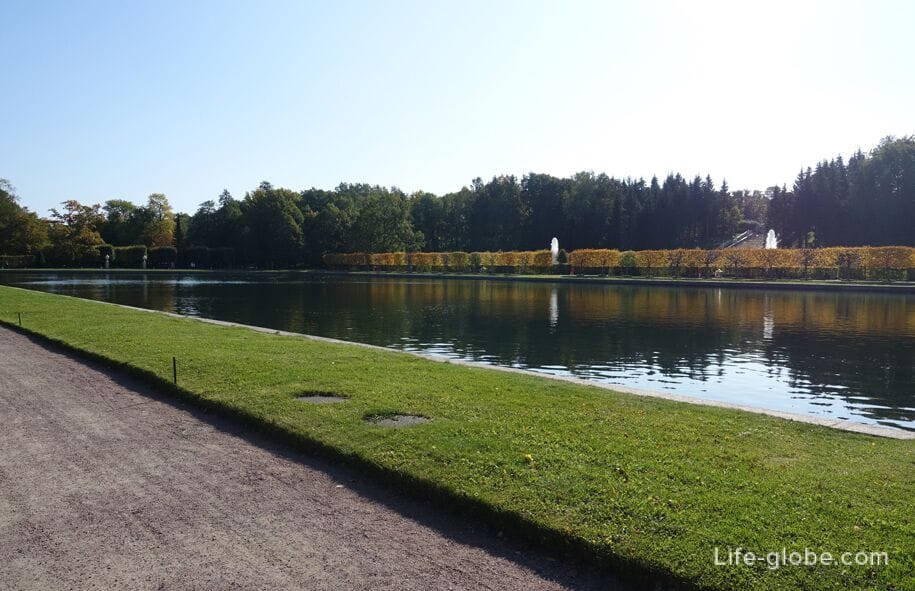
The sectorial pond, or "small pond", is located behind the palace (on its western side).
This pond is small, made in the form of a semicircle and is divided into four sectors - hence the name of the pond.
Even under Peter I, the banks and three dividing dams of the pond were decorated with Dutch brick-clinker.
On the dams there are pedestrian bridges with iron openwork grilles and railings.
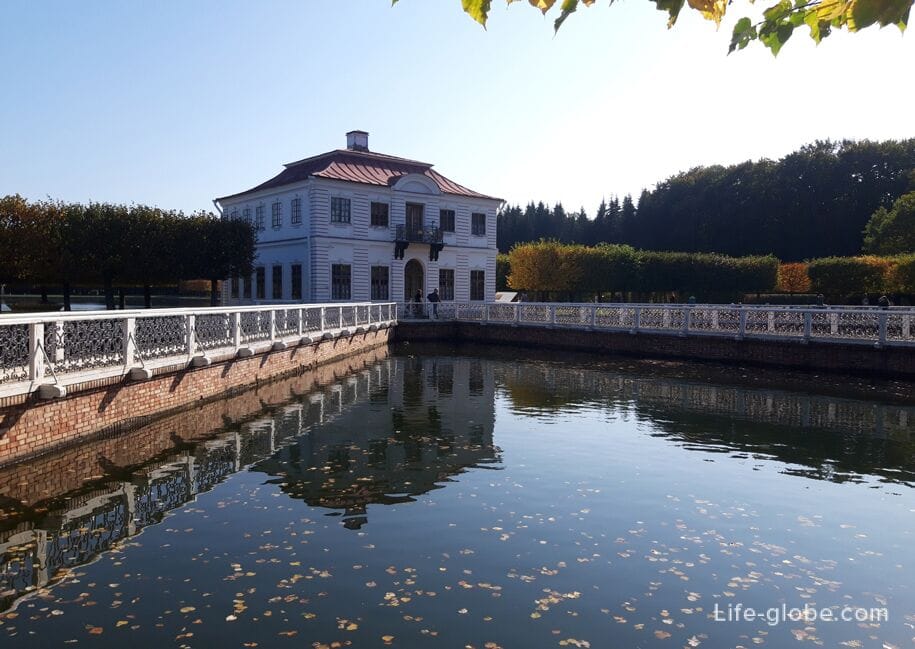
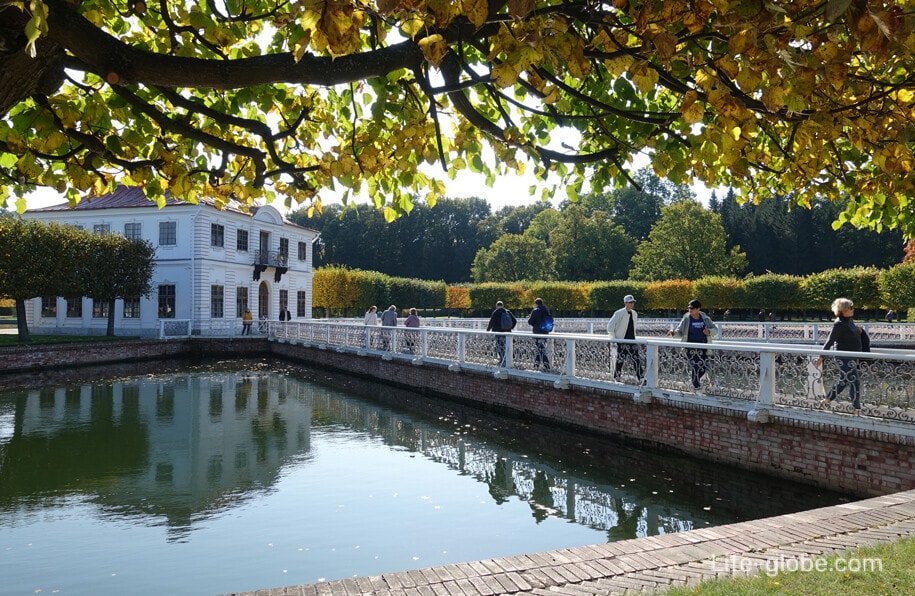
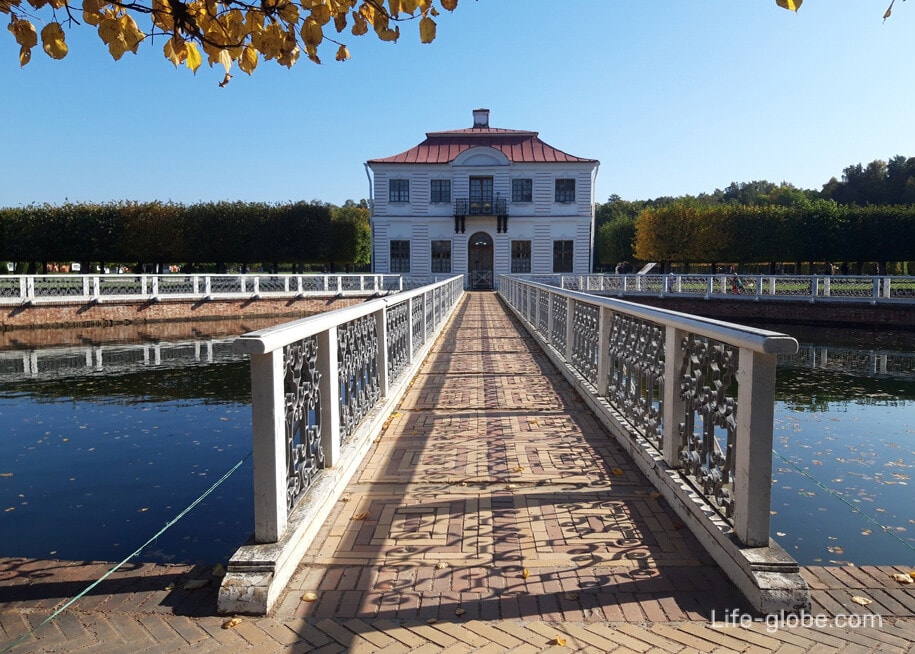
The Marli Palace plays an important role in the overall layout of the Lower Park. From the eastern shore of the Big Marlin Pond, three ray alleys diverge - Marlin, Birch and Maliban (Sea). These alleys cross the entire Lower Park from west to east and connect the palace with the main buildings of the Peterhof Courtyard ensemble, including the Lion Cascade Fountain and the Monplaisir Palace ensemble.
The ensemble of the Marli Palace, with its ponds, manicured gardens, fountains and vegetation, is one of the most visited and impressive parts of the Lower Palace Park.
On the north side of the Large Pond, directly near the Gulf of Finland, lies the Garden of Venus, which was used to grow fruit for the imperial meals.
Today, the Garden of Venus is considered one of the most beautiful buildings in the palace park.
The main decoration of the garden, from which the garden received the name "Venus", is a marble statue of Venus of Media, made on the model of the famous ancient Greek sculpture.
Behind the statue of Venus, along the entire garden, there is a retaining wall with balustrades and a wide staircase.
The garden terraces offer views of the Marli Palace itself with its surrounding ensemble and the Gulf of Finland. Learn more about the Garden of Venus…
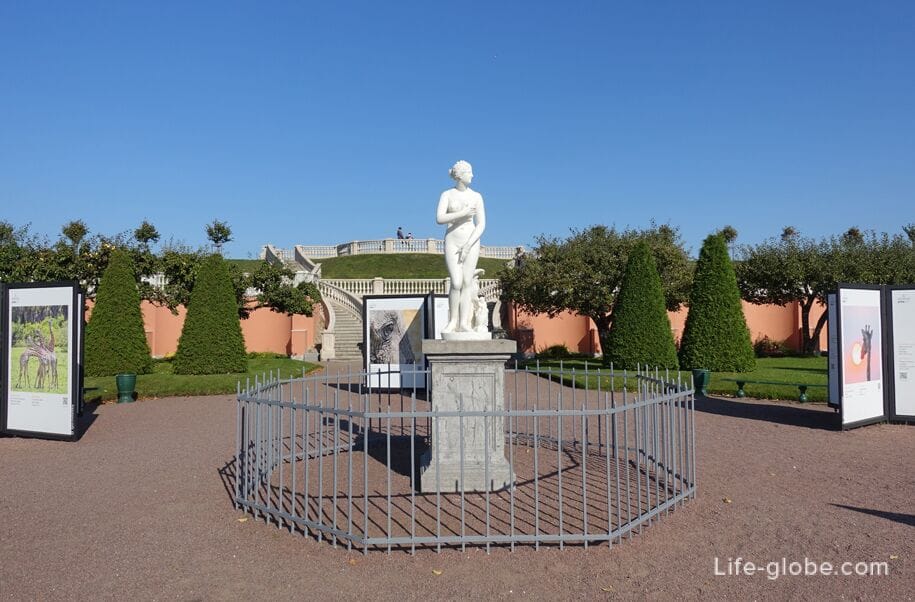
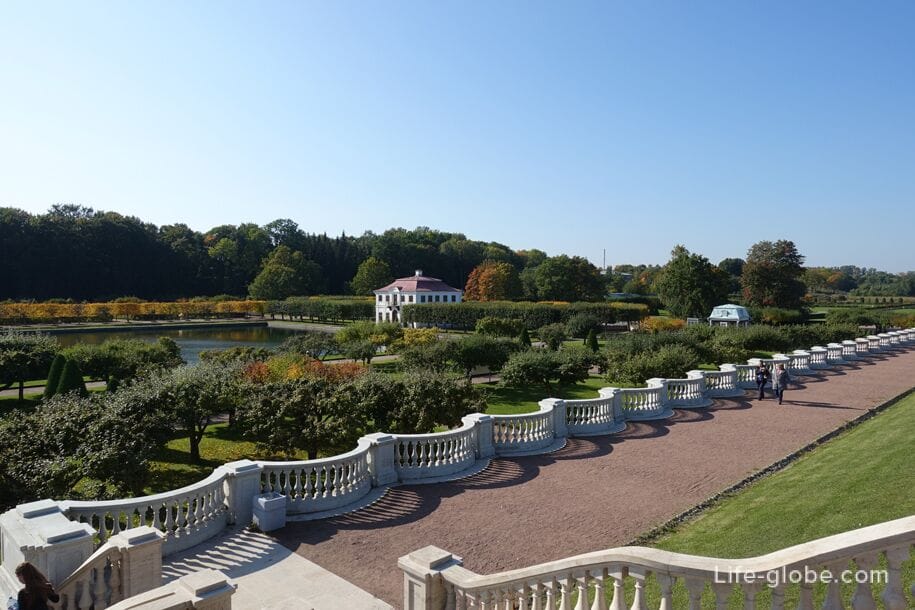
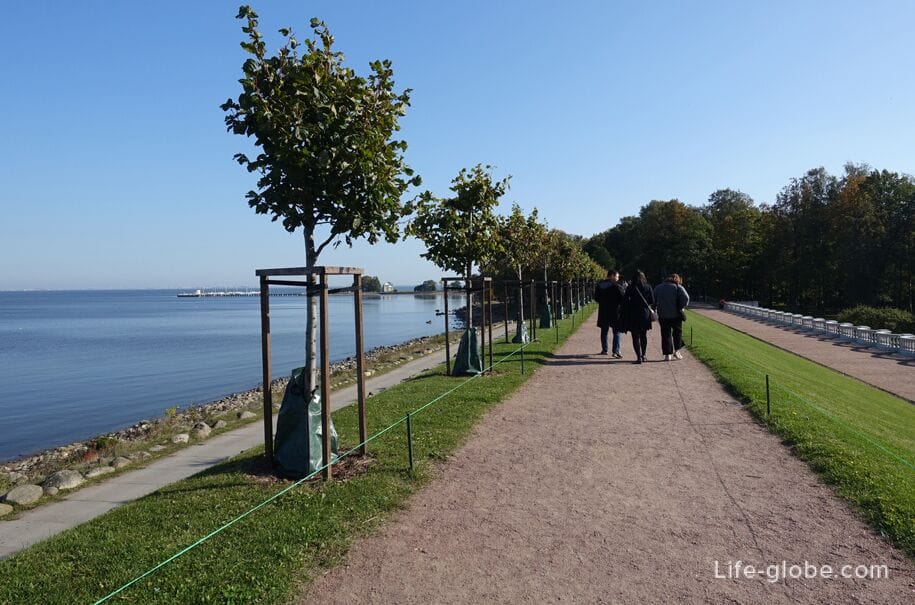
On the opposite side of the Large Pond from the garden of Venus (south) is a terrace decorated with fountains and sculptures:
- cascade "Golden Mountain" - a fountain located on a natural slope and has a stepped descent, decorated with statues and gilded mascarons of sea monsters. Learn more about the Golden Mountain cascade with photos and videos…

- twoMenagerie fountains, created in 1722-1724 by the architect N. Michetti.
The fountains have round bowls of pools, from the center of which a powerful jet of water shoots up. The water jet of the fountains rises up to 15 meters and is clearly visible from afar. Learn more about Menagerie fountains with photos and videos…
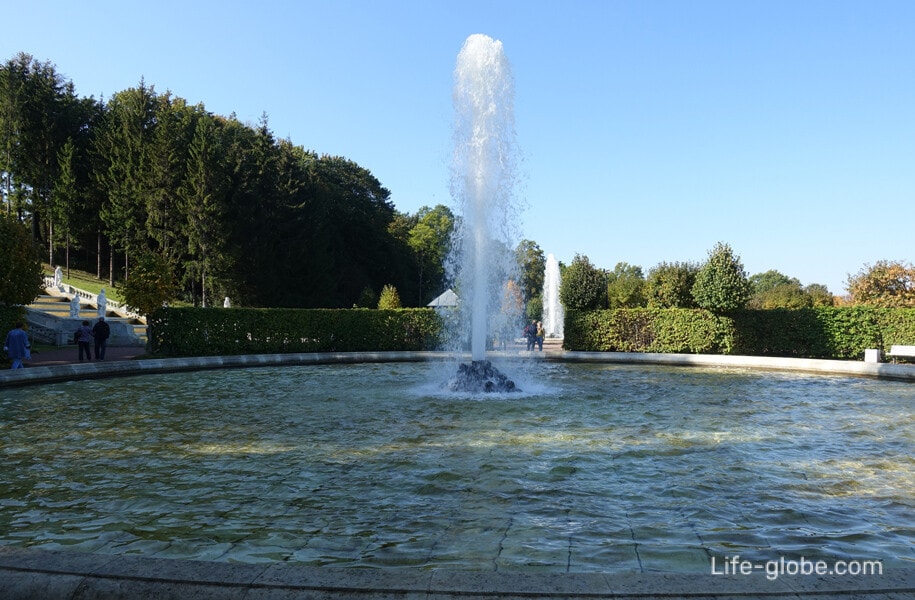
- four fountains "Tritons-bells", which are installed along the coastal alley of the Big Marlin Pond.
Fountains "Tritons-bells" consist of sculptures of four identical boys-tritons, located in small pools and holding in their hands above their heads flat bowls with tips, from which water in the form of water bells flows into the pools of the fountains. Learn more about "Tritony-Kolokol fountains"…

- genre sculpture "Air";
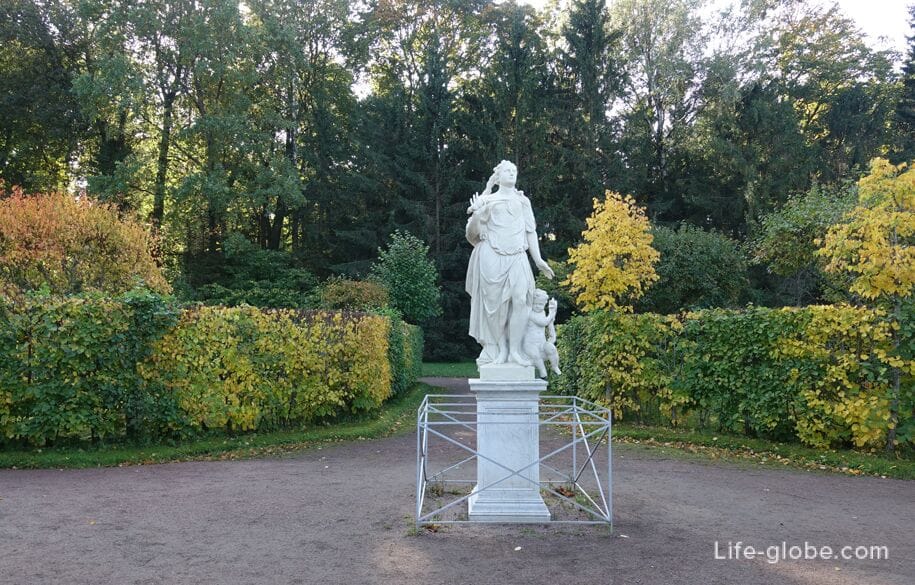
- genre sculpture "Earth".

On the west side of the Marli Palace (behind the palace), in a well-kept area with ornamental trees and lawns, there is a genre sculpture "Athena Giustiniana" (Minerva Giustiniani, Athena Giustiniani / Giustiniani Minerva), mounted on a high pedestal.
In Peterhof there is a copy of a sculpture found in the early 17th century in the ruins of the nymphaeum, called the Temple of Minerva Medica, on the Esquiline Hill - one of the seven hills of Rome.
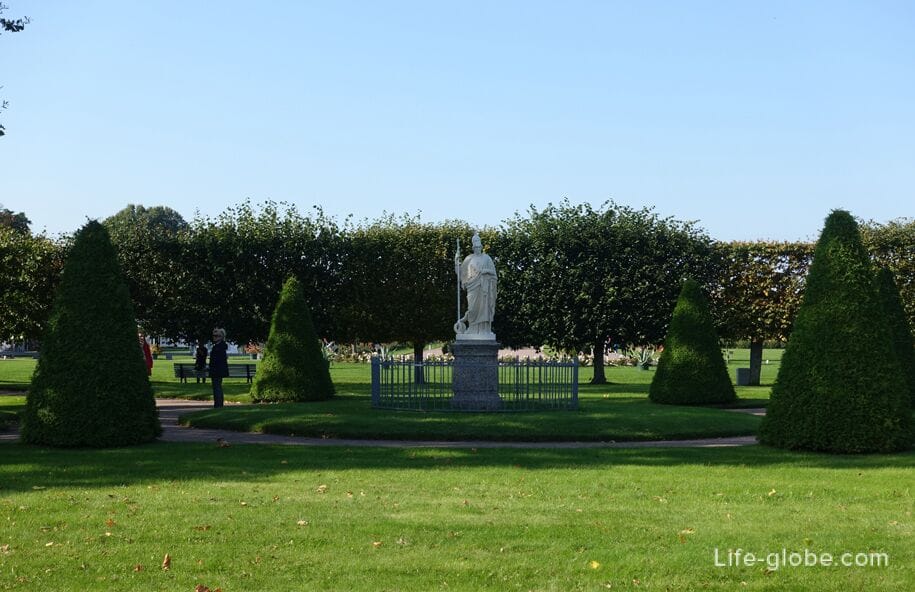
To the west of the sculpture, across the narrow river Shingarka, stretches the Bacchus garden, which originally, like the garden of Venus, had a utilitarian meaning-in the garden of Peter I tried to grow grapes, but because of the climate of St. Petersburg, the idea could not be realized.
Today, the Bacchus Garden is a walking area with lawns that are framed by ornamental trees and flowers, including roses.
The center of the garden is decorated with a monumental monument to Peter I, which is a sculptural group mounted on a high three-stage pedestal, which depicts Peter the Great with Louis XV in his arms.
At the eastern edge of the Bacchus Garden, along the alley, under the open sky, there is an information and exhibition platform "Peterhof during the war", which tells about the fate of the city during the Great Patriotic War. Learn more about Bacchus Garden…
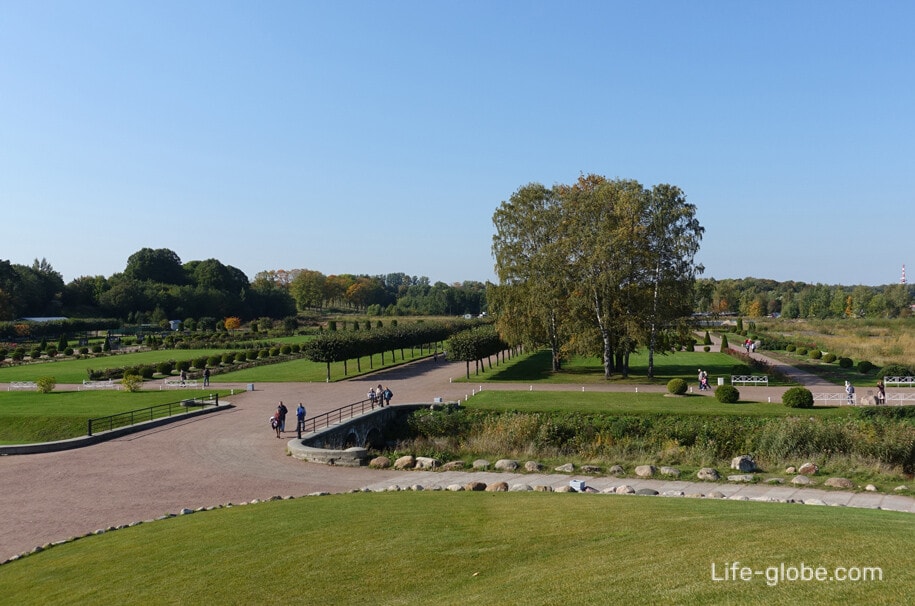

The Marli Palace with its adjacent ensemble is located on the shore of the Gulf of Finland in the western part of the Lower Park of the Peterhof Palace and Park Ensemble.
In the photo: the Marly Palace and ponds-in the center, the ensemble of fountains-on the right, the garden of Venus-on the left
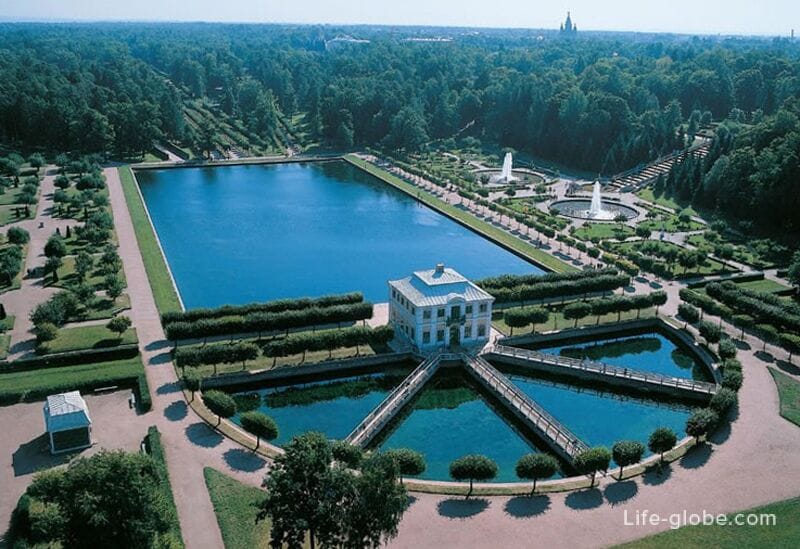
The museum at the Marly Palace is closed in winter. The working hours may change, please check before visiting!
In winter, when the fountains of the park are not working, the entrance to the Lower Park is free (free of charge).
During the summer, the fountains are open and the entrance to the Lower Park is paid.
Visits to the park's museums, including those within the walls of the former Marly Palace, are paid separately (extra).
The opening hours of the park and the Marly Palace, as well as the conditions of the visit and the cost of tickets, we recommend that you check immediately before visiting the official website.
Website of the State Museum-Reserve "Peterhof": peterhofmuseum.
You can also visit the State Museum-Reserve "Peterhof" with one of the excursions
All the ways to get to Peterhof from St. Petersburg (the airport and the city center) can be found here →
Near the Palace and Park Ensemble "Peterhof" you can stop
The 4-star Novy Peterhof Hotel features a restaurant, a bar, parking, a tour desk, a spa area with an indoor pool, a gym, a steam bath, a Finnish cedar sauna and an aroma sauna.
The rooms are decorated in a modern style and feature a TV with satellite channels, free Wi-Fi, a safe, bathrobes and slippers, a hairdryer and free toiletries. Some rooms have a seating area.
The room rate can include: breakfast, breakfast + dinner or breakfast + lunch + dinner. Link to the hotel
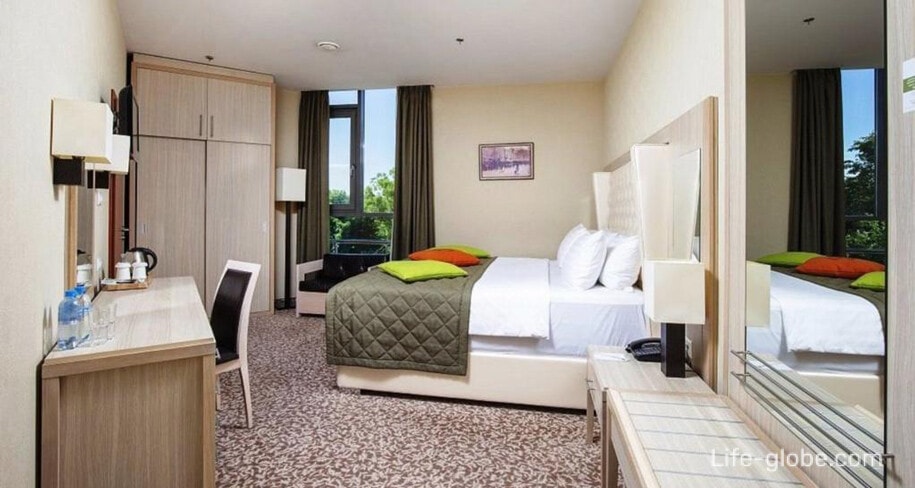
EGO-LOFT Apartment (Holgin Pond) they offer views of the lake and the city.
The apartmentfeatures air conditioning, a balcony, free Wi-Fi, a flat-screen TV, a washing machine, a bedroom, a kitchen with a dishwasher and a microwave, and a bathroom with a hairdryer and free toiletries. Link to the apartment
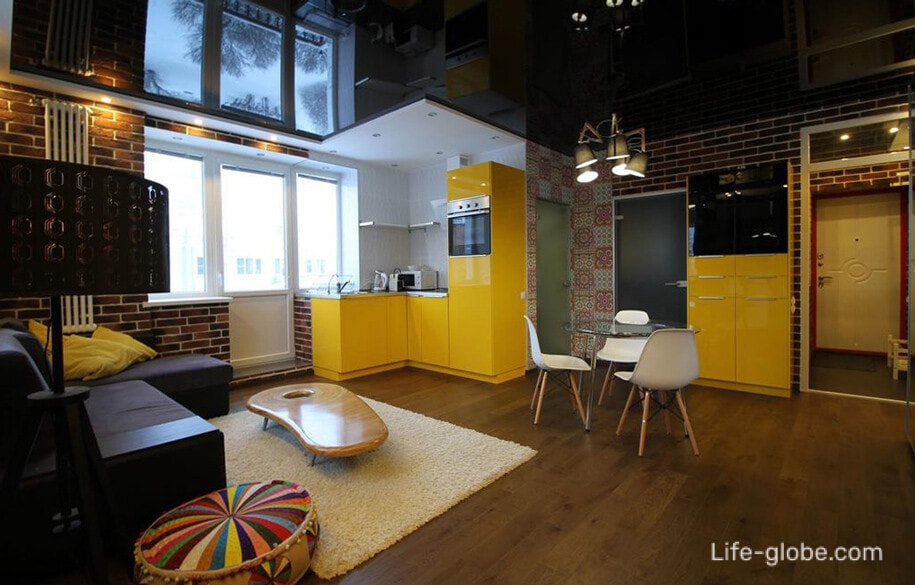
Apartments Severnaya Venezia featuring a balcony with lake views, offers free Wi-Fi, a children's playground, a garden and a shared lounge.
The apartmentfeatures a bedroom, a flat-screen TV with cable channels, an equipped kitchen with a microwave and a refrigerator, a washing machine, and a bathroom with a shower. Link to the apartment
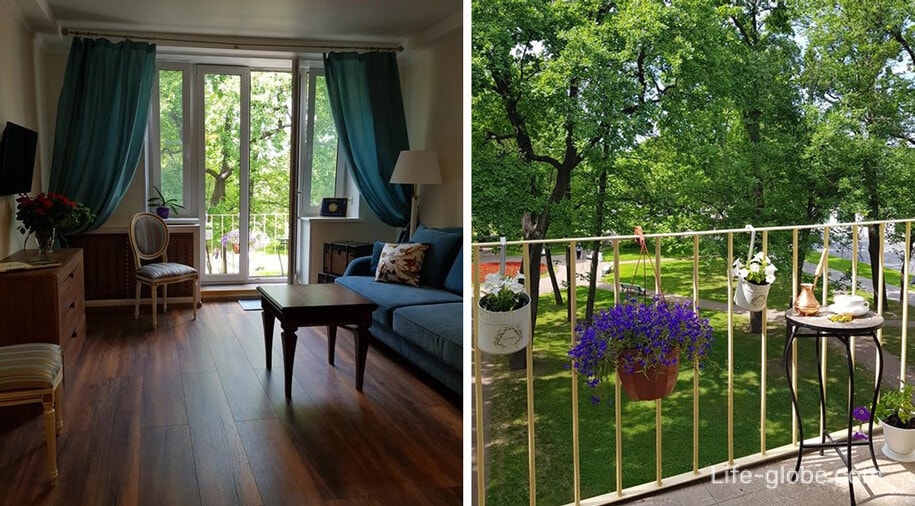
All accommodation facilities in St. Petersburg, including in the city center and in Peterhof, can be viewed and booked here